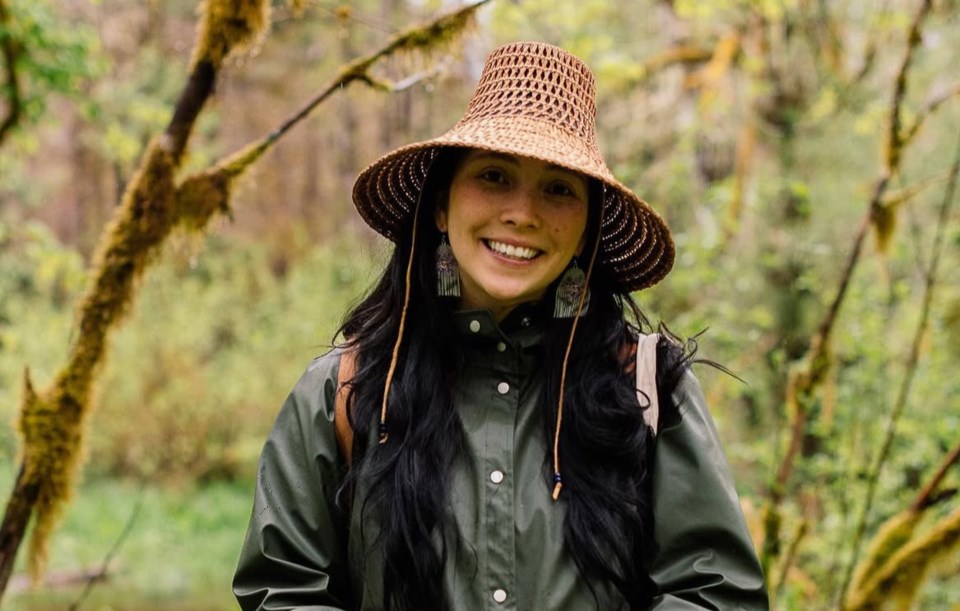Why does it matter when students see teachers who look like them? How important is it for Indigenous voices to lead in classrooms?
For the first time in the Sea to Sky School District (SD48), that is finally happening.
Tessa Antone says she is the first Sḵwx̱wú7mesh Úxwumixw (Squamish Nation) teacher in the district.
Her Sḵwx̱wú7mesh, Ukrainian, and Norwegian background helps her bring unique cultural experiences into her teaching.
From student to educator
Growing up in Squamish, Antone's educational path began at Howe Sound Secondary.
Later, she enrolled at the University of British Columbia (UBC), initially starting in the general arts program.
Feeling “overwhelmed by massive lecture halls,” she sought a more connected learning environment. That search led her to UBC's Indigenous Teacher Education Program (NITEP), a perfect fit for her passion for community and land-based learning.
“It's kind of shocking to think I'm the first Squamish Nation teacher in the district,” the 26-year-old teacher shared with The Squamish Chief.
“There are so many amazing educators in our community. But being here now, teaching and building relationships with students has been so fulfilling.”
Weaving culture into learning
For Antone, her passion lies in creating an inclusive learning space where Indigenous students feel seen and valued.
“When students don't see themselves reflected in their teachers, it can be hard for them to understand their place in the world. Representation is so important for every student's growth,” she said.
By embracing her full identity in the classroom and prioritizing land-based learning, Antone weaves Sḵwx̱wú7mesh culture into her teaching.
“It’s more than just taking lessons outdoors—it’s about honouring the land as a teacher. That connection enriches the learning experience for everyone.”
“I bring my whole self into the classroom. I want students to know who I am and where I come from. That authenticity builds trust and encourages them to do the same,” Antone said.
Overcoming challenges and sparking change
While her start in the district has been positive, Antone recognizes the broader challenges of integrating Indigenous perspectives in schools.
She reflected on being the only Indigenous student in a class.
“It can be tough when instructors rely on Indigenous students to teach others. That can put a lot of pressure on someone who's still reconnecting with their own culture.”
Antone advocates for systemic changes, calling for more land-based learning and culturally relevant content.
“We need to rethink how we approach education. Land-based learning isn't just a trend—it's a way to truly connect students with their environment and culture.”
Guiding the next generation
To young Indigenous people considering education careers, Antone offers heartfelt advice, “don’t feel pressured to follow a strict timeline.”
“We can learn so much from our community—from our aunties, uncles, elders—and that knowledge is just as valuable as any degree. If you feel you have a gift, follow it in whatever way feels right to you.”
Looking ahead
Though currently working as a substitute teacher, Antone has big dreams.
Drawing inspiration from her time at Xwemélch’stn Etsimxwawtxw also called Capilano Little Ones School, she wants to introduce more traditional knowledge and land-based programs.
“I want to keep learning from our community and bring more land-based, culturally grounded teaching into our schools,” Antone said.
“It's all about helping students connect with the land and their own identities.”
The Squamish Chief reached out to the Sea to Sky School District for comment for this story; a spokesperson said the district is committed to fostering diversity, equity, and inclusion, as reflected in its hiring approach.
“While we cannot comment on specific personnel matters, we remain dedicated to building a diverse team and providing opportunities for underrepresented groups in education," the spokesperson added.
Bhagyashree Chatterjee is The Squamish Chief's Indigenous and civic affairs reporter. This reporting beat is made possible by the Local Journalism Initiative.



